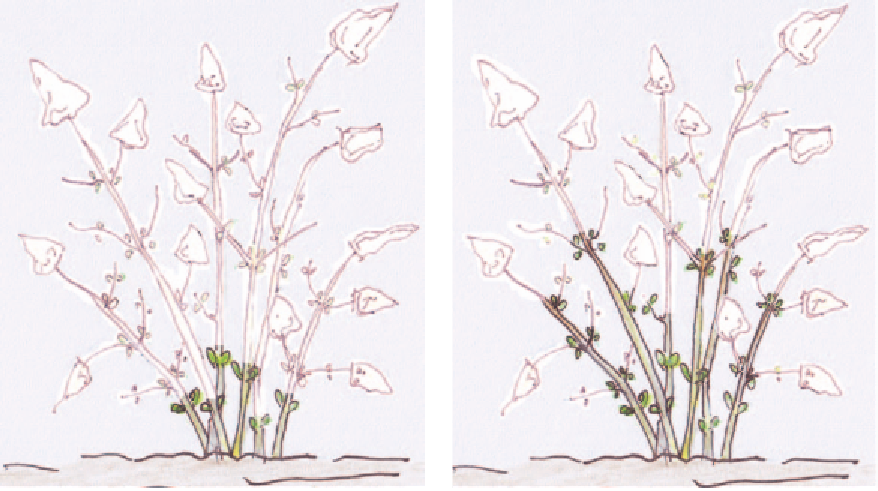Agriculture Reference
In-Depth Information
Figure 4.52
Prune the stems to the lowest set of fat buds.
This keeps the shrub small.
Figure 4.53
For a taller shrub, reduce the main branches
and prune back to the new growth close to the stem.
third to the lowest pair of fat buds or new
growth (see Figure 4.52).
back in spring to remove wayward branches
and thin any overcrowded wood. The old
flowered stems can be pruned back to within
a few buds of the major branches that become
deliciously brown and peeling as they age. It
also responds well to complete decapitation if
it has become too large for its space.
To maintain a larger shrub, prune back close
to a permanent framework of branches (see
Figure 4.53).
As always, the harder you prune the larger
the flowers but the less shrub there is.
Pollardingandcoppicing
These two ancient techniques really work on
the same principle. Initially this pruning
practice created working trees in much the
same way as managed fruit trees. As a group
they are both referred to as orchards.
Pollarding is when a tree is repeatedly cut
back to a particular point on the trunk to
produce a mass of new stems (see Table 4.15
Climbinghydrangea
The climbing hydrangea
H. anomala
ssp.
petiolaris
can be used to cover walls, stream
down banks, ascend trees or form a tangled
mound as it climbs on itself. If you are
fortunate enough to live in a cool to cold
area, this plant is extremely vigorous once
established. This hydrangea flowers on the
current season's growth and can be pruned

